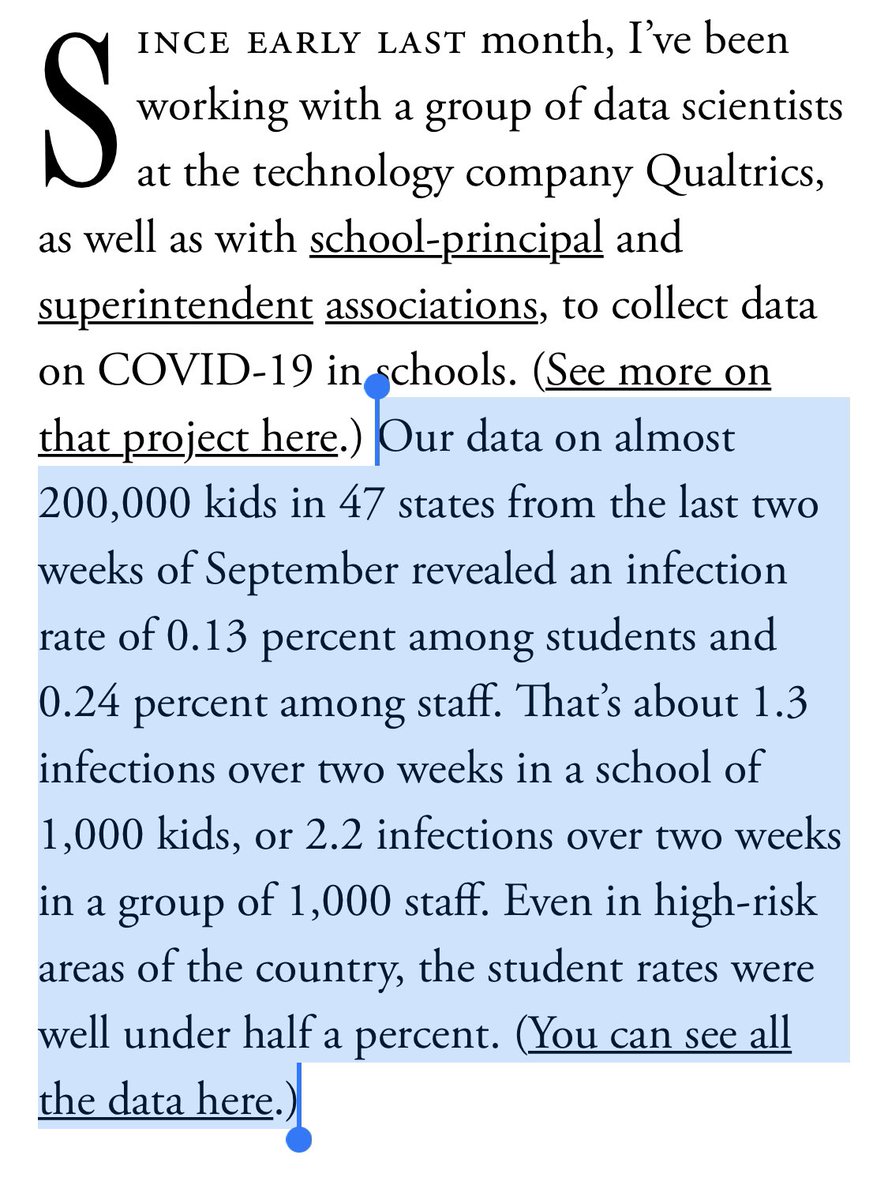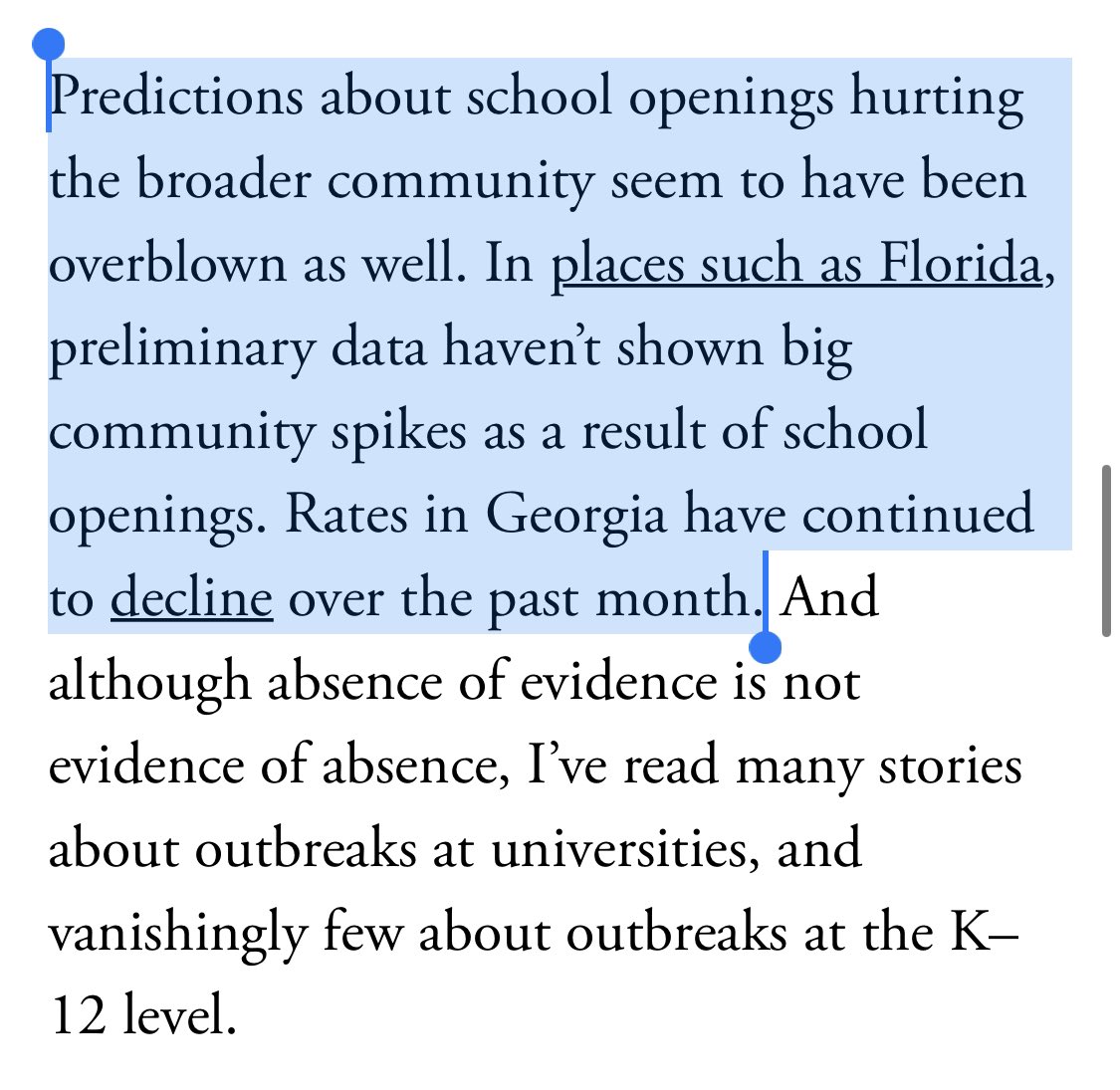
@CarolineSeydel @tarahaelle I'll see if I can explain this via tweet!
As adults are vaccinated, they will be less likely to be infected, even if exposed to covid. As more adults become immune, the population who is still susceptible to infection will be mostly kids.
As adults are vaccinated, they will be less likely to be infected, even if exposed to covid. As more adults become immune, the population who is still susceptible to infection will be mostly kids.
@CarolineSeydel @tarahaelle So, for example, if only 10% of infections are in 5-14 range, as adults become vaccinated this group is more likely to make up an increasing proportion of cases.
This is true even if their infection rate was constant bc there'd be less infected adults.
This is true even if their infection rate was constant bc there'd be less infected adults.
@CarolineSeydel @tarahaelle But, as more schools go in-person kids will have more contact with each other, both in classrooms and in sports, play dates, etc. so the infection rate is also likely to increase in this group.
And again, even if the chance of each interaction still had the same transmission...
And again, even if the chance of each interaction still had the same transmission...
@CarolineSeydel @tarahaelle … when you have more contacts, the probability of one of them being infected & transmitting goes up.
So, more contact between kids means more infections with kids, particularly if the virus hasn't been controlled before the increase in contacts occur.
So, more contact between kids means more infections with kids, particularly if the virus hasn't been controlled before the increase in contacts occur.
@CarolineSeydel @tarahaelle Now, it's possible that you can also lower the chance of passing covid during these interactions - good masks with high adherence, good ventilation / outdoor interactions, distancing, high asymptomatic testing, etc.
This will help lower transmission risk per interaction.
This will help lower transmission risk per interaction.
@CarolineSeydel @tarahaelle And this will occur in some places, but there are also a lot of places that cannot or will not have good mitigation, so transmission might go up much more there.
As transmission goes up, it snowballs making it more likely that you encounter someone infected, and spirals upwards
As transmission goes up, it snowballs making it more likely that you encounter someone infected, and spirals upwards
@CarolineSeydel @tarahaelle So that's the general infectious disease dynamics part of this.
Then there's the human behavior part.
As adults become less vulnerable than's to vaccines, they're going to lower their guard for themselves and probably their kids. And mitigation efforts will fall...
Then there's the human behavior part.
As adults become less vulnerable than's to vaccines, they're going to lower their guard for themselves and probably their kids. And mitigation efforts will fall...
@CarolineSeydel @tarahaelle This will be combined with loosening restrictions on businesses and activities, so infected kids (often asymptomatic) are more likely to be indoors together (restaurants, movie theaters, etc) or with unvaccinated adults, so transmission continues within these populations.
@CarolineSeydel @tarahaelle So while overall infection rates are likely to drop (hurray!) the burden of infections is likely to shift towards children.
How dangerous this is depends in part on what variants are circulating and how vulnerable the children are who become infected during this time.
How dangerous this is depends in part on what variants are circulating and how vulnerable the children are who become infected during this time.
@CarolineSeydel @tarahaelle As infections become more widespread we're more likely to see severe disease in kids who seem low risk just because the more kids who are infected the more likely hidden vulnerabilities will come to the surface - similar to how some dangers of new meds get revealed once approved.
@CarolineSeydel @tarahaelle And if the new variants prove to be more risky for kids (or even some portion of kids) it could also be more dangerous.
Side note: the more the virus passes between people, the more mutations happen, the more variants show up and some could be really nasty.
Side note: the more the virus passes between people, the more mutations happen, the more variants show up and some could be really nasty.
@CarolineSeydel @tarahaelle Which is all to say "it's complicated and it depends".
But all of this is why I get concerned about people getting the impression that things will be safer for kids as adults are vaccinated. If we act carefully, this can be true. If we don't… 😬
But all of this is why I get concerned about people getting the impression that things will be safer for kids as adults are vaccinated. If we act carefully, this can be true. If we don't… 😬
• • •
Missing some Tweet in this thread? You can try to
force a refresh





